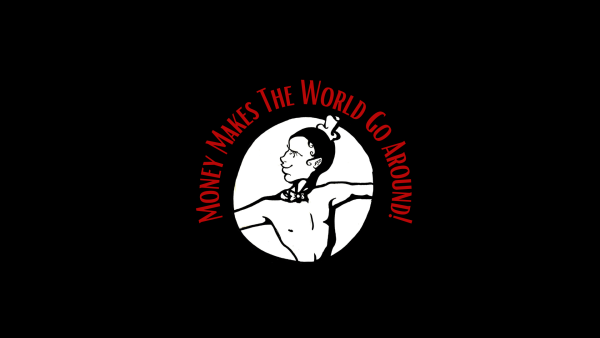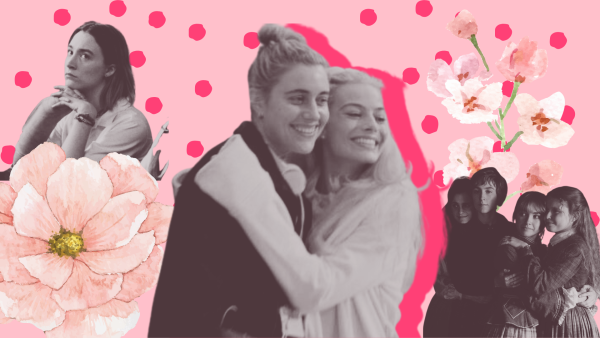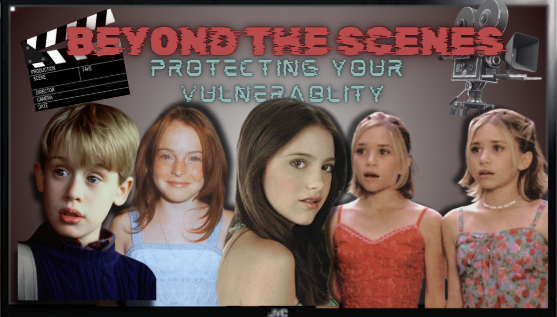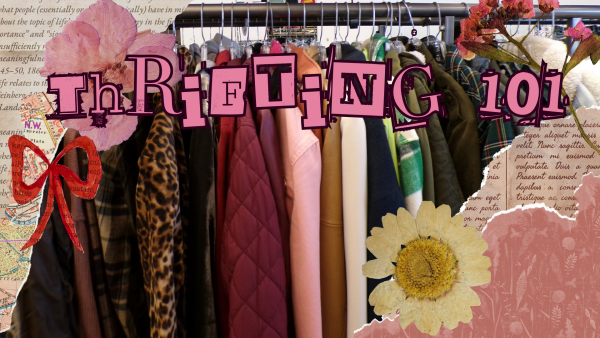The Rocky Horror Picture Show: Radical Respresentation and Rock n Roll Songs
Be Just and Fear Not.
After a pair of disembodied, bright red lips sing a soft rock song about science fiction movies along with some opening credits, The Rocky Horror Picture Show begins with a wedding scene. A well dressed crowd cheers on a couple of young, heterosexual newly-weds off to start their new life as a traditional nuclear family. The men engage in awkward, sterile conversation, the bride throws the bouquet, all is well. And, amid the calm mundanity of the movie’s first scene, the camera pans to a wooden sign etched with these words: Be Just and Fear Not.
The Rocky Horror Picture Show made its debut as a movie in 1975, six years after the Stonewall Riots. LGBTQ+ rights were just beginning to become part of mainstream American political discourse, and the western world was still freshly and radically transformed from the sexual revolution of the 1960’s. It was released during a decade marked by disillusionment and change.
The movie came out on Halloween night; its release originally received little attention and was panned by critics who complained that it did not hold a candle to the original play. However, it soon gained a cult following after it began running as a midnight screening at the Waverly Theater in New York. The audience participation and shadow cast that accompany the live performance started there as well. The film attracted a largely, but not exclusively, queer fanbase due to its open-hearted portrayal of subverting gender and sexual norms.
Soon, it spread to theaters all over the country and attracted a predominately teenage audience. For many viewers, it was their first experience with any mode of expression outside of the cishet-normative box of behavior. It was the door to a quickly changing, more tolerant world. There’s a light over at the Frankenstein place!
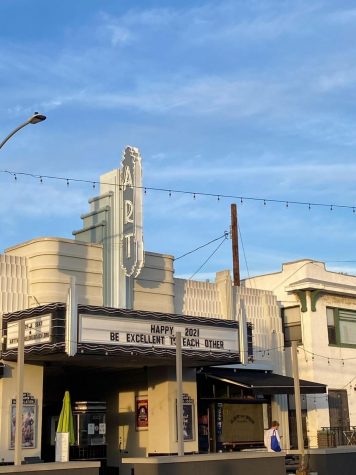
The Rocky Horror Picture Show is not an incredibly popular movie. It is definitely a classic, but it is pretty niche. The almost cult-like behavior of the fans and the bizarre plot of the movie is enough to deter most people — let alone the abrasive queerness and the overt sexuality that is sure to offend the sensibilities of more conservative audience members. And yet, it continues to have a large, dedicated fan base. In the forty-five years since its release, fans have continued to frequent midnight showings all over the world. In fact, The Art Theatre in Long Beach had a showing of the movie every Saturday night before shutdowns due to the COVID-19 pandemic, and they have affirmed that they intend to begin again once it is safe to do so.
Watching the Rocky Horror Picture Show performed live might seem, to an outsider, like a cult gathering. It felt like that the first time I went to watch it; everybody knew what to say and when to say it, everybody knew the queues, everybody knew the dances. People dress up for the occasion, often sporting homemade costumes and dressing like characters from the movie. People of all genders wear lingerie, makeup, leggings, and otherwise racy clothing. Some people go occasionally for kicks, some are regulars that attend every Saturday night. Everybody looked like they were at home.
What keeps these people coming back? Sure, the songs are catchy and it is a relatively fun watch, but for most people, it is not something that necessarily warrants a second viewing. In fact, for most people it is just kind of stupid. A common reaction is probably even a little bit of second hand embarrassment for the cast and audience who seem to pour their hearts and souls into such a ridiculous production. But that is exactly the point.
Rose Goestch, a close friend of mine and a fellow queer, was the first person to take me to see Rocky Horror Picture Show.
“It was the first movie I watched of its kind– the antithesis of the Hollywood movie style, queer, and everything shocking and insane,” she said. “There is nothing that matches the feeling of screaming the ad libs or the lyrics to “Touch-a, Touch-a, Touch Me” with a crowd of strangers that you know accept you for exactly who you are,” Goestch added.
The movie is a staple in alternative communities, especially LGBTQ+ communities, because of its open-hearted portrayal of the queer identity. Rocky Horror is a space in which queerness can exist without barriers, and queer people can celebrate themselves without repercussions or judgment. It is popular exactly because it offends the right people: the close-minded cishets! And, in creating this community, the movie connects deeply with those who feel alienated by the capitalist world of patriarchy and heteronormativity in which we inhabit.
But this begs the question: what exactly is alienating to these people, and what does the Rocky Horror Picture Show offer that feels so liberating? Why can’t we just get along?
To answer that, we have to look at the nature of queerness (“That’s a rather tender subject. Another slice, anyone?”). Gender and sexual orientation are social constructs, meaning they do not exist in “objective” reality. They only exist because humans collectively agree they do. However, social constructs require a material base to exist, something tangible to point to. For sexual orientation and gender, this base is reproductive labor, or making the next generation (sex, birth, raising children, etc). Our natural biological features became gendered, and from this system sprouted gender roles, gender binaries, the patriarchy, and heteronormativity. The Gender Accelerationist Manifesto, By Vikki Storm and Eme Flores, describes gender as a class system that has been enforced and perfected throughout time; men at the top (the patriarchy), women come second, and queer people at the bottom. This is because queer people cannot engage with traditional reproductive labor. Not that they cannot have biological children per se, but that they do not function in the heteronormative structures of family and sex that result from this system of reproductive labor. By existing outside of the cishet superstructure, they challenge the very nature of it.
This system has always existed, but not always in the state it is in today. Many non-European cultures had gender systems that operated outside of a binary, some having five or more (these were mostly exterminated as a result of European imperialism and colonization). It was also not always so rigidly enforced; queerness was not even a concept in many past civilizations because sex and love were not always connected to reproductive labor like they are now. However, because of Europe’s attempt to assimilate alternative gender systems during colonization, European cultures began the process of rigidly enforcing the class system of human gender and sexuality, eventually creating the superstructure of the cishet-patriarchy that we see today. This system is policed and enforced through sexual and sometimes even state-sanctioned violence.
In order to escape these oppressive systems, many people who live outside of this structure choose to create alternative communities that come with unique cultures, complete with their own customs, ideals, art, and modes of being. Some of the LGBTQ+ movement, in more mainstream currents, attempt to assimilate into the cishet superstructure. However, Storm says, “Queer power is separate from the existing institutions. We declare our difference, unashamed, and proud… This means creating queer organizations and institutions. Counterpowers to the dominant patriarchal class system.” More radical currents of the movement maintain that queer liberation cannot be found within these structures, but separate from them.
Art serves an integral purpose in the creation and reflection of cultural identity. Queer culture has its own art, its own music, its own literature, and its own film that reject the imposed structure of cishet society. Here is where the movie enters the picture. The Rocky Horror Picture Show is considered a revolutionary queer film because of the way it works to dismantle that superstructure; the movie challenges binaries, subverts normativity, and flips hierarchies. This was long before sociologists even had the language to describe these aspects.
It would be a lie to say that Rocky Horror was the first queer film, but it might be the most radical and it has definitely reached the most people.
“[Rocky Horror] is so outrageous and so offensive to the cishet-patriarchy, it is everything that is liberating and freeing to [people] who lie outside of that structure,” said Goestch. “[It] allowed me to rebuild my relationship with my femininity. Everything in this movie feels so incredibly feminine and powerful to me, and that was so liberating for that feminine side of me that I feel I had lost touch with before due to my internalized misogyny,” she added.
Anyone familiar with the movie can acknowledge that it is a story about self-discovery, reclamation, and ultimately personal freedom. It speaks volumes to those who feel like they have lost a part of themselves to the world, something that was trained out of them as a child. Our schools, our culture, our parental figures, any and all systems of authority have conditioned us into boxes of cis-heteronormativity, (albeit subconsciously, they are victims of this system as well).
Rocky Horror creates a space where, for an hour and forty minutes, we are all allowed to celebrate those parts of ourselves that are repressed or shunned: our feminine self, our gender-rebellious self, our queer self. The movie does this like no other movie had done before or has done since. We can find catharsis in watching Brad and Janet finally give into their unconventional desires. We can cheer on and wish to be Tim Curry, strutting around and loudly singing in lingerie, refusing to give into the world around him. We can imagine a reality in which queerness dominates the world of cis-gendered heterosexuality. In this act of collective celebration, we ultimately not only affirm the validity of the queer identity but the beauty of it; a beauty that the world would like us to forget.
“For quite some time, The Rocky Horror Picture Show quite literally existed as the embodiment of the anti-patriarchy in my mind,” affirmed Goestch. “To me and to so many others, it exists as a sort of rebellion,” she said.
Indeed, the movie and specifically the ritual surrounding it is an act of protest. The patriarchal superstructure of gender and sexuality teaches us that queerness is perverse and is something that should be altered or ‘cured.’ Instead of seeing a difference, the cishet-patriarchy sees a problem. Therefore, celebrating queerness and “perversion” rejects the accepted social superstructure. Celebrating queerness is not only self-care, but it is a radical act of insurgency in a world that wishes to impose a vanilla existence of cultural hegemony onto us. Black lesbian poet Aurdre Lorde said that caring for oneself “is not self-indulgence, it is self-preservation, and that is an act of political warfare.” The Rocky Horror Picture Show is queer joy as an act of resistance.
That mysterious phrase, “Be Just and Fear Not,” now, in the context of personal and collective liberation, reveals its meaning. It is a small piece of advice, hidden at the very beginning of the film.
“Be Just,” meaning act with compassion and a sense of justice. Do not judge too quickly, and be understanding of those who are different from yourself. Strive to put good into the world.
And “Fear Not,” meaning do not be afraid to stick it to people who will not be just. Being just does not necessarily mean cutting pieces from yourself to make space for others; it means demanding and taking the space you deserve, and it means lifting your friends and family up into spaces of their own. Fear not when they call you slurs, or when they laugh behind your back, or when they try to tear you down. Do not be afraid to exist, unabashedly, as your full self. You were put on this earth not to please others, or to wish you could be more, but to live to the fullest extent you possibly can. In the immortal words of Dr. Frank N. Furter: “Don’t dream it. Be it.”
Your donation will support the student journalists of Huntington Beach High School. Your contribution will allow us to cover our annual website hosting costs.
Thank you for supporting our program!



